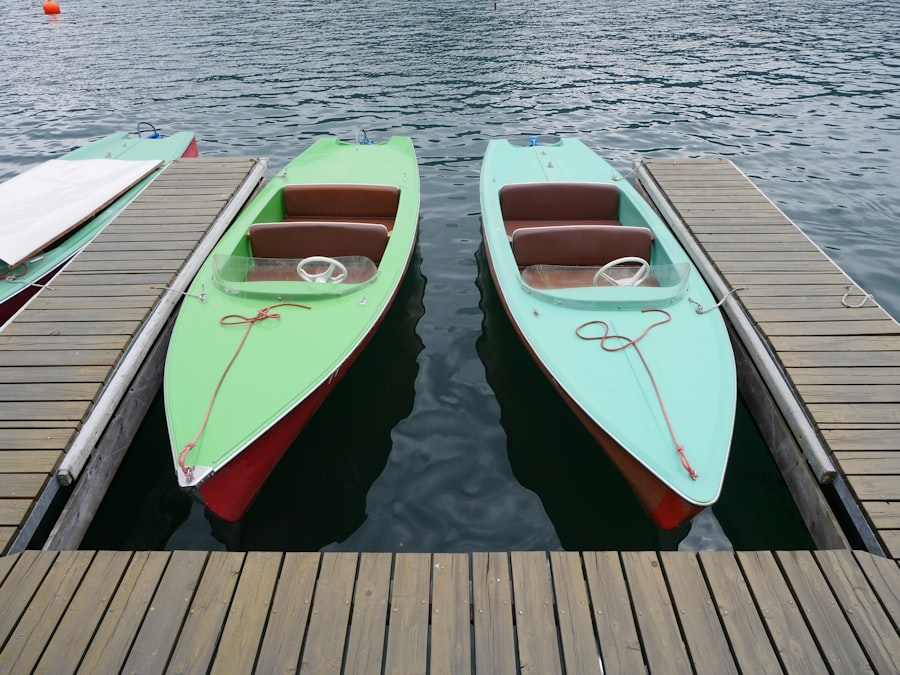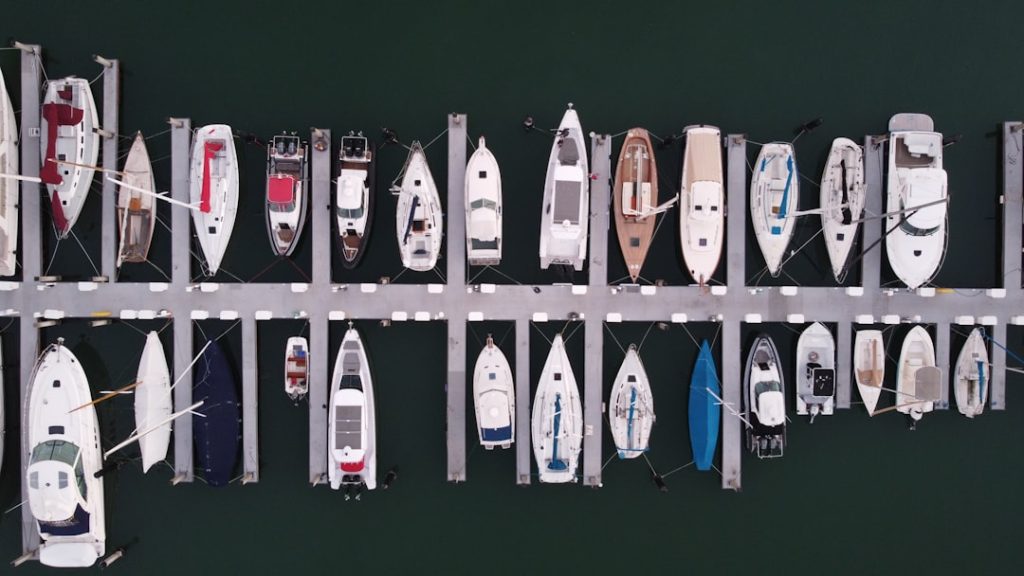The market for used boats is a dynamic and multifaceted landscape that reflects broader economic trends, consumer preferences, and seasonal fluctuations. As boating becomes increasingly popular, particularly in regions with abundant waterways, the demand for used boats has surged. This demand is driven by various factors, including the rising costs of new boats, the desire for affordability, and the appeal of owning a vessel without the steep depreciation that often accompanies new purchases.
Understanding this market requires an awareness of the types of boats available, the demographics of buyers, and the seasonal patterns that influence sales. In recent years, the used boat market has seen a notable increase in online platforms that facilitate buying and selling. Websites such as Boat Trader, YachtWorld, and Craigslist have transformed how buyers and sellers connect, allowing for a broader reach and more competitive pricing.
Additionally, social media platforms have become valuable tools for marketing used boats, enabling sellers to showcase their vessels to a targeted audience. This shift towards digital marketplaces has not only expanded the options available to buyers but has also introduced new challenges, such as ensuring the authenticity of listings and navigating potential scams. Therefore, understanding the market involves not just recognizing trends but also being savvy about the tools and platforms that can aid in making informed purchasing decisions.
Key Takeaways
- Research the market thoroughly to understand pricing and demand for used boats.
- Identify reliable brands and models known for durability and performance.
- Choose reputable sellers and conduct detailed inspections before purchase.
- Negotiate effectively and explore financing options to get the best deal.
- Learn about ownership transfer procedures and proper maintenance to ensure longevity.
Researching the Best Brands and Models
When it comes to purchasing a used boat, thorough research into brands and models is essential. Different manufacturers have varying reputations for quality, durability, and resale value. For instance, brands like Boston Whaler and Sea Ray are often lauded for their craftsmanship and reliability, making them popular choices among buyers.
Conversely, some lesser-known brands may offer lower initial prices but could lack the longevity or performance that seasoned boaters seek. Understanding these nuances can significantly impact a buyer’s satisfaction with their purchase. Moreover, specific models within these brands can cater to different boating needs.
For example, if a buyer is interested in fishing, they might gravitate towards models like the Grady-White Fisherman series, known for their stability and fishing-friendly features. On the other hand, those looking for leisure cruising might prefer a model from the Regal or Chaparral line, which emphasizes comfort and amenities. Researching reviews, expert opinions, and user testimonials can provide valuable insights into which models hold up over time and which may require more frequent maintenance or repairs.
Engaging with online forums or local boating clubs can also yield firsthand experiences from other boat owners, further informing a buyer’s decision.
Finding Reputable Sellers and Dealers

Identifying reputable sellers and dealers is a critical step in the process of purchasing a used boat. The integrity of the seller can significantly influence the overall experience and outcome of the transaction. Buyers should consider both private sellers and dealerships when exploring options.
Private sellers may offer lower prices due to reduced overhead costs; however, they may lack the professional backing that dealerships provide. On the other hand, established dealers often have a reputation to uphold and may offer warranties or guarantees that can provide peace of mind. To find reputable sellers, potential buyers should conduct thorough research.
Online reviews and ratings can be instrumental in assessing a dealer’s credibility. Websites like Yelp or Google Reviews can provide insights into past customer experiences. Additionally, checking with local boating associations or clubs can yield recommendations for trustworthy dealers in the area.
It’s also advisable to visit dealerships in person to gauge their professionalism and customer service firsthand. Engaging with staff members can reveal their knowledge about the boats they sell and their willingness to assist buyers in making informed decisions.
Inspecting the Condition of Used Boats
| Inspection Area | Key Metrics | Acceptable Condition | Common Issues |
|---|---|---|---|
| Hull | Cracks, Blisters, Delamination | No cracks or blisters; solid structure | Gelcoat cracks, soft spots, osmosis blisters |
| Engine | Hours of Use, Oil Condition, Leaks | Runs smoothly; no leaks; oil clean | Excessive smoke, oil leaks, corrosion |
| Electrical System | Battery Health, Wiring Condition, Functionality | All systems operational; no corrosion | Corroded terminals, faulty wiring, dead battery |
| Deck and Hardware | Wear and Tear, Fasteners, Seals | Secure fittings; no soft spots | Loose fittings, cracked seals, rot |
| Plumbing | Leaks, Pump Operation, Water Pressure | No leaks; pumps work properly | Leaking hoses, faulty pumps |
| Safety Equipment | Life Jackets, Fire Extinguishers, Flares | All required equipment present and functional | Expired or missing equipment |
| Interior | Upholstery Condition, Mold, Odors | Clean, dry, no mold or mildew | Stains, mold growth, unpleasant odors |
Inspecting the condition of a used boat is perhaps one of the most crucial steps in the purchasing process. A thorough inspection can uncover potential issues that may not be immediately visible but could lead to significant expenses down the line. Buyers should approach this task methodically, examining both the exterior and interior of the vessel.
Key areas to focus on include the hull for signs of damage or wear, the engine for any leaks or irregularities, and the electrical systems for functionality. In addition to visual inspections, it is advisable to conduct a sea trial whenever possible. This allows potential buyers to assess how the boat performs on water—checking for stability, responsiveness, and any unusual noises that may indicate underlying problems.
Furthermore, enlisting a marine surveyor can provide an expert opinion on the boat’s condition. A surveyor will conduct a comprehensive evaluation, including checking for structural integrity and compliance with safety standards. This professional insight can be invaluable in making an informed decision and negotiating repairs or price adjustments based on findings.
Negotiating the Best Price for a Used Boat
Negotiating the price of a used boat requires a blend of research, strategy, and interpersonal skills. Before entering negotiations, buyers should arm themselves with knowledge about comparable sales in the area to establish a fair market value for the specific model they are interested in. Websites that track sales data can provide insights into what similar boats have sold for recently, giving buyers leverage during discussions.
When negotiating, it’s essential to approach the conversation with confidence but also with respect for the seller’s position. Starting with a lower offer based on research can open up dialogue without offending the seller. It’s also beneficial to highlight any issues discovered during inspections as bargaining chips to justify a lower price.
For instance, if a boat requires new upholstery or has minor mechanical issues, these factors can be used to negotiate a better deal. Ultimately, successful negotiation hinges on clear communication and a willingness to find common ground that satisfies both parties.
Financing Options for Purchasing a Used Boat

Financing a used boat purchase can be approached through various avenues depending on individual financial situations and preferences. Traditional bank loans are one option; many banks offer specialized marine financing programs tailored specifically for boat purchases. These loans typically come with competitive interest rates and terms that can accommodate different budgets.
However, securing financing through a bank often requires good credit history and may involve extensive paperwork. Another popular option is financing through credit unions or specialized marine lenders who understand the unique aspects of boat ownership. These lenders may offer more flexible terms or lower interest rates compared to traditional banks.
Additionally, some dealerships provide in-house financing options that can simplify the purchasing process by allowing buyers to handle everything in one location. It’s crucial for buyers to compare interest rates, loan terms, and any associated fees across different financing options to ensure they are making an informed decision that aligns with their financial goals.
Understanding the Process of Transferring Ownership
Transferring ownership of a used boat involves several important steps that must be followed to ensure legal compliance and protect both parties involved in the transaction. The first step typically involves obtaining a bill of sale that outlines key details such as the purchase price, boat identification number (VIN), make and model, and both buyer’s and seller’s information. This document serves as proof of ownership transfer and is essential for registration purposes.
Once the bill of sale is completed, buyers must register their newly acquired vessel with their state’s boating authority or department of motor vehicles (DMV). This process often requires submitting various documents, including proof of ownership (the bill of sale), previous registration (if applicable), and payment of any applicable fees or taxes. Each state has its own regulations regarding boat registration; therefore, it’s crucial for buyers to familiarize themselves with local laws to ensure compliance.
Additionally, if there are any liens on the boat from previous loans or financing agreements, these must be resolved before ownership can be fully transferred.
Maintaining and Caring for a Used Boat
Proper maintenance is vital for ensuring longevity and optimal performance of a used boat. Regular upkeep not only enhances safety but also preserves resale value over time. Key maintenance tasks include routine cleaning of both the interior and exterior surfaces to prevent mold growth and corrosion from saltwater exposure.
Using appropriate cleaning products designed specifically for marine environments is essential to avoid damaging surfaces. Engine maintenance is another critical aspect of caring for a used boat. Regularly checking oil levels, replacing filters, and inspecting fuel lines can prevent costly repairs down the line.
Additionally, winterizing procedures are crucial in colder climates where freezing temperatures can damage engines if not properly prepared for storage during off-seasons. This includes draining water from systems and adding antifreeze where necessary. Furthermore, keeping an eye on safety equipment such as life jackets, flares, fire extinguishers, and first aid kits ensures compliance with safety regulations while providing peace of mind during outings on the water.
Regular inspections of these items should be part of an overall maintenance routine to ensure they are in good working order when needed. In summary, understanding the market dynamics for used boats involves thorough research into brands and models while identifying reputable sellers is crucial for making informed decisions. Inspecting boats meticulously before purchase helps avoid future headaches while negotiating effectively can lead to better deals.
Exploring financing options tailored to individual needs ensures affordability while navigating ownership transfer processes legally protects both parties involved in transactions. Finally, maintaining a used boat through regular care not only enhances its performance but also contributes to enjoyable experiences on the water for years to come.


